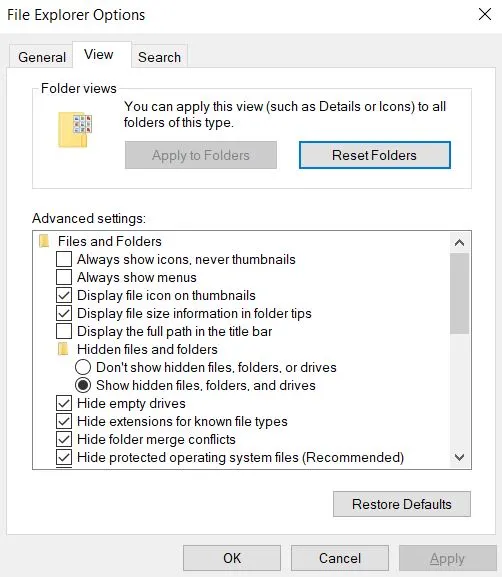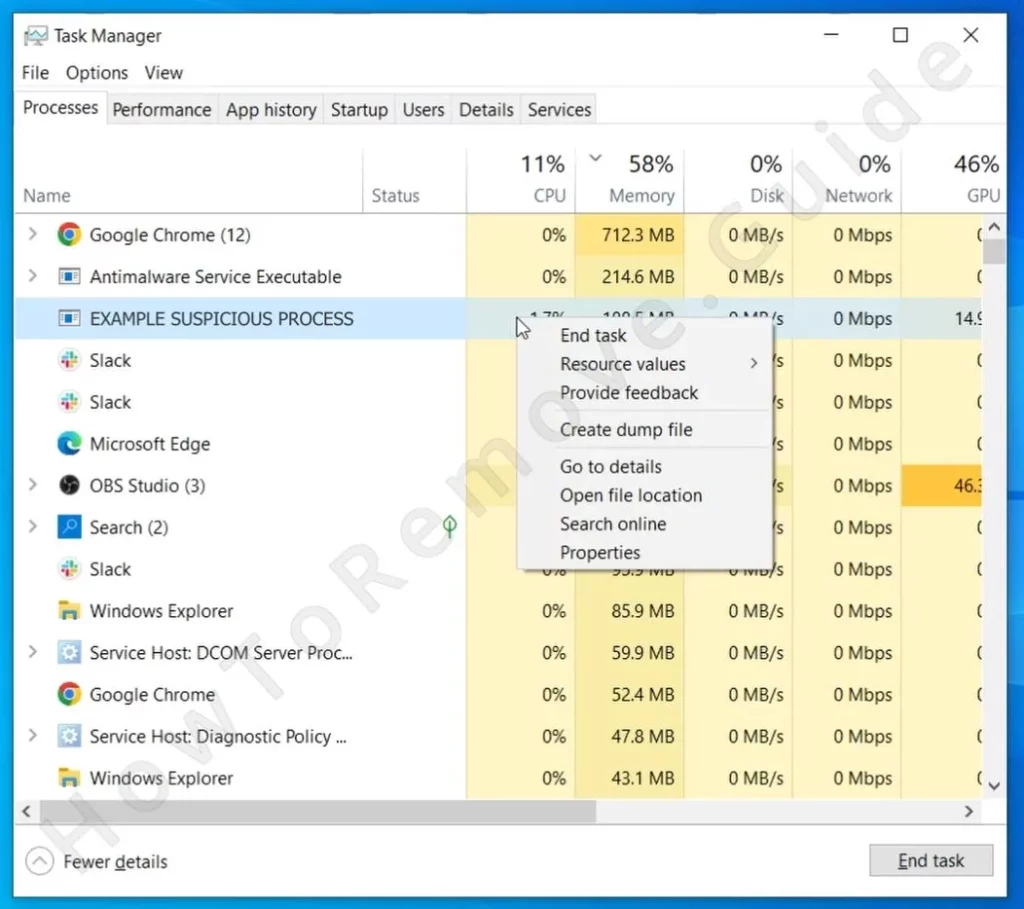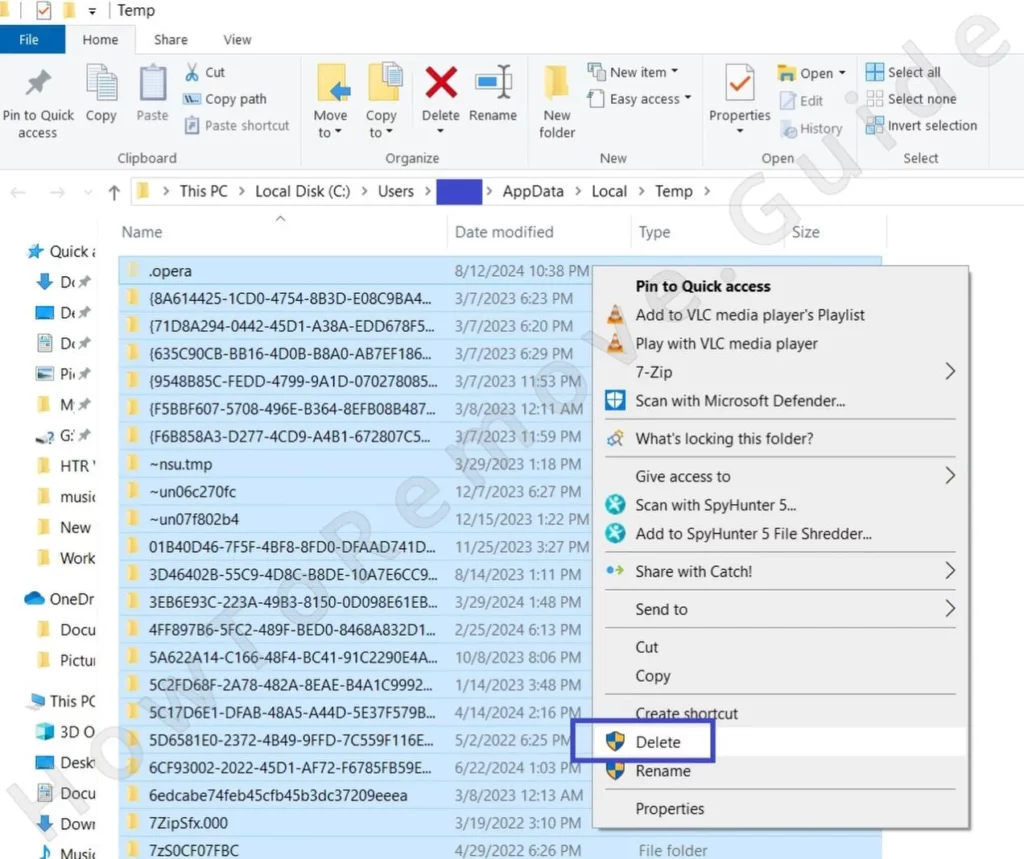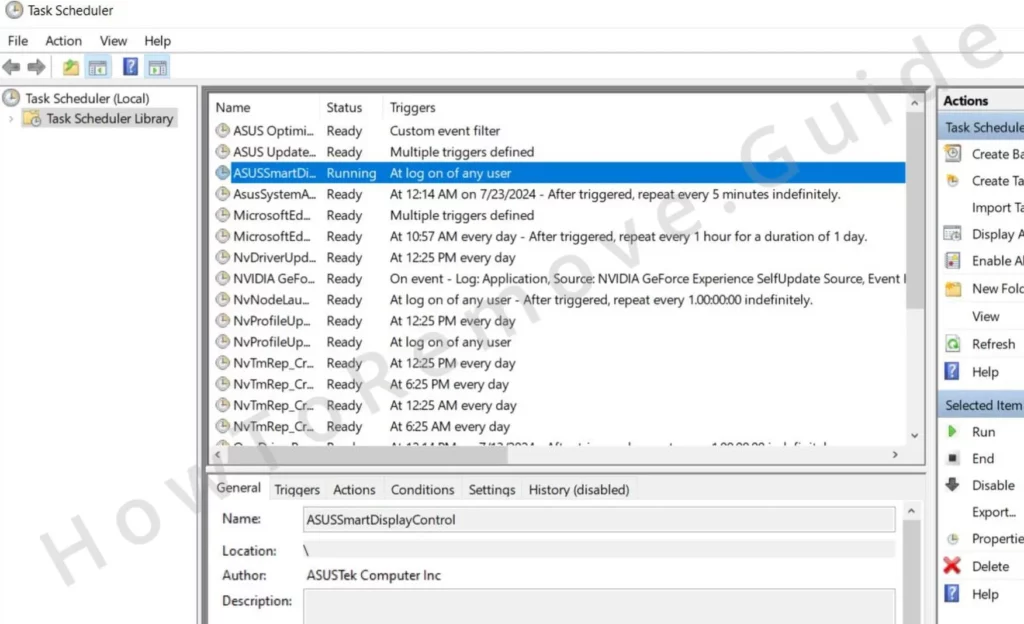Win32/Gamehack is a type of malware mainly contained in cracked games, console game ROMs, and open-source game mods, where rogue actors can easily put in malicious payloads.
The most common symptom of this malware is aggressive and potentially misleading notifications and ads that appear at any time, no matter if the browser is open or not. It behaves similarly to other recently detected forms of malware like the Weather Zero virus and Altisik Service. The sudden popups tend to be particularly obstructive, but an even bigger issue with them is that they can expose the user to more malware or various types of scams.
Unsurprisingly, Win32Gamehack employs several persistence techniques that enable it to reinstall itself even once it’s been seemingly removed. We studied this malware in detail to figure out a reliable way to delete it, and now we are about to share it with you.
Win32/Gamehack Removal Instructions
Before we get to the full Win32/Gamehack removal guide, we recommend that you try a simpler solution. This has a rather low chance of success, but if you are lucky, it might save you quite a bit of time:
- Open your Start Menu. Click the Settings icon. This icon looks like a gear, easy to spot.
- In Settings, navigate to Apps.
- Sort the list by the date of installation and look at the most recently added apps and programs.
- The program (usually a cracked game) that brought you the malware should be there.
- Click it and click Uninstall. Follow the prompts closely to fully uninstall everything. Then go to the folder where the game was installed and manually delete anything that may have been left behind.
Restart your computer after the process. Check if the malware remains. Often, it does. In such cases, don’t worry. The detailed instructions below will guide you to wipe Win32 Gamehack completely from your system.
SUMMARY:
IMPORTANT! READ BEFORE CONTINUING
Malware like Win32/Gamehack evolves. It gets frequent updates from its creators. The updates aim to make the malware more difficult to delete. This means the steps below may not be as effective depending on when you are reading them, despite our attempts to keep them up-to-date. Additionally, some of you may find the manual steps challenging or too time-consuming.
For those short on time or who don’t think they can manage the manual removal, we offer an alternative. SpyHunter is a robust anti-malware tool that can tackle threats like Win32/Gamehack with ease. It saves time and spares you the hassle.
How to Get Rid of Win32 Gamehack
This is the detailed removal guide for Win32 Gamehack. Follow each step to the letter or the malware may not get fully removed and eventually reinstall itself.
Essential Preparations: Installing LockHunter
We do our best to avoid including third-party software in our guides, but this time you’ll need to get a free tool called Lock Hunter.
This utility identifies and unlocks malware files that cannot otherwise be deleted. Folders too. The virus may protect these files or folders, making deletion impossible. Therefore, LockHunter is non-negotiable in this case. Without it, the manual process might fail.
Revealing Hidden Files and Folders
To hunt down and remove all components of Win32Gamehack, you must see everything, including files and folders that are normally hidden.
Open the Start Menu. Search for “Folder Option”.
Select “Show hidden files, folders, and drives” in the View tab. Click Apply, then OK.

Now you’ll be able to delete everything linked to the malware.
Remove the Win32/Gamehack Virus Processes
Now, we turn to rogue processes – these are what allow Win32/Gamehack to function and perform its malware activities.
Open Task Manager by pressing Ctrl + Shift + Esc or by searching for it in the Start Menu. If in compact view, click “More Details”.
Sort processes by Memory usage. Then by CPU usage. Watch for resource hogs. Unfamiliar names too.

Don’t expect to find anything named Win32/Gamehack. The malware will hide its processes under different names, some of which may seem innocuous. You must use your own judgment to figure out which ones may be malicious.
One specific process name we can give you here is “svckost.exe” (not svcHost.exe!).
If you see the svckost.exe task or think you’ve spotted another suspicious process, right-click it. Select “Open File Location”. This takes you to its folder. There, you must delete everything. No hesitation.
As we explained earlier, the rogue files and folders might be locked and you may be unable to delete them normally. Use LockHunter. Install it if you haven’t done so already, then right-click the stubborn file/folder. Click “What’s Locking this file/folder”, then click Delete in the following window.
Return to Task Manager afterward to end the process. Right-click, then “End Task”.
Repeat this for any other rogue processes.
Delete Win32Gamehack Virus Files
Next, time to remove any other files tied to Win32Gamehack left in your system.
First, navigate to C:\ProgramData\Microsoft\Windows\Start Menu\Programs\Startup. Look for anything suspicious and delete it. If you don’t know what to delete, just get rid of everything except desktop.ini file if it’s there.
Do the same in C:\Users\YourUsername\AppData\Roaming\Microsoft\Windows\Start Menu\Programs\Startup.
Next, in your C: drive, check Program Files and Program Files (x86) directories. If anything there seems related to Win32/Gamehack, it must go.
One particular folder you must look for in Program Files is GameVersionUpdate. If you see it, open it, and if there’s a file named GameVersionUpdate.dll in there, delete the entire folder.
Finally, clear out the Temp folder. Find it at C:\Users*YOUR USERNAME*\AppData\Local\Temp. It’s safe to delete everything here, which is what we recommend you do.

Check and Clean the Task Scheduler
The Task Scheduler – an often overlooked part of the Windows system. Just as often used by malware for greater persistence. Win32/Gamehack might use it to reintroduce itself in case the user manages to delete it. Don’t let this happen.
Open the Start Menu, then search for the Task Scheduler and open it.
Carefully review the scheduled tasks in the Task Scheduler Library Folder (you’ll find it in the top-left).

If any task looks off, double-click it and go to the Actions tab. See what program or command it executes. Check where it’s located.
If the task runs questionable .exe files, scripts, or anything that’s stored in the AppData or Roaming folders, get rid of the respective task. Then also go to the file it was pointing to and delete it too.
Review all tasks. Don’t leave any unchecked.
Clean the Windows Registry
You’ve reached the final step. Cleaning the Windows Registry. It’s crucial, but also not for everyone. Mistakes here can lead to further problems in the system. If you are unsure you can handle it, SpyHunter can help.
Got the confidence to manually clean your registry? Then here’s what you do:
Search for “regedit” in the Start Menu then run the first show result as an Administrator. The Registry Editor opens.
Ctrl + F to bring up the search bar, then type the name of any recently installed programs (including games) that are likely to be responsible for that malware’s appearance on your computer.
Delete associated keys. Keep going until no entries remain.
Next, go to the following registry key in the left panel:
HKCU\Software\Microsoft\Windows\CurrentVersion\Run
Click on the key and look to the left. If there’s a value named “winlogon” with “%TEMP%\svckost.exe” in the Data column, you must delete it.
Important!
The next and final part of the registry cleanup requires you to take your time and carefully examine the different items for anything questionable. We can’t provide specific names, so you’ll have to do most of the legwork here. Be careful and if you aren’t sure whether a particular registry key or value is important to your system, better leave it untouched.
Navigate to the following registry keys:
- HKCU\Software\Microsoft\Windows\CurrentVersion\Run
- HKCU\Software\Microsoft\Windows\CurrentVersion\RunOnce
- HKLM\Software\Microsoft\Windows\CurrentVersion\Run
- HKLM\Software\Microsoft\Windows\CurrentVersion\RunOnce
- HKLM\Software\Microsoft\Windows\CurrentVersion\Policies\Explorer\Run
- HKCU\Software\Microsoft\Windows\CurrentVersion\Policies\Explorer\Run
- HKEY_LOCAL_MACHINE\Software\Microsoft\Windows\CurrentVersion\RunServices
- HKEY_LOCAL_MACHINE\Software\Microsoft\Windows\CurrentVersion\RunServicesOnce
- HKEY_LOCAL_MACHINE\Software\Microsoft\Windows\CurrentVersion\RunOnce\Setup
- HKEY_LOCAL_MACHINE\SYSTEM\CurrentControlSet\services
Carefully examine the values. These are on the right panel. You’re looking for anything suspicious. Anything unfamiliar that shouldn’t be running on your PC. The process requires diligence. Rushing won’t help. Take your time.
Once the Registry is clean, Win32/Gamehack and any related malware should be gone. However, if the virus persists, you still have the option to use SpyHunter. A few clicks and Win32/Gamehack will be gone.

Leave a Reply